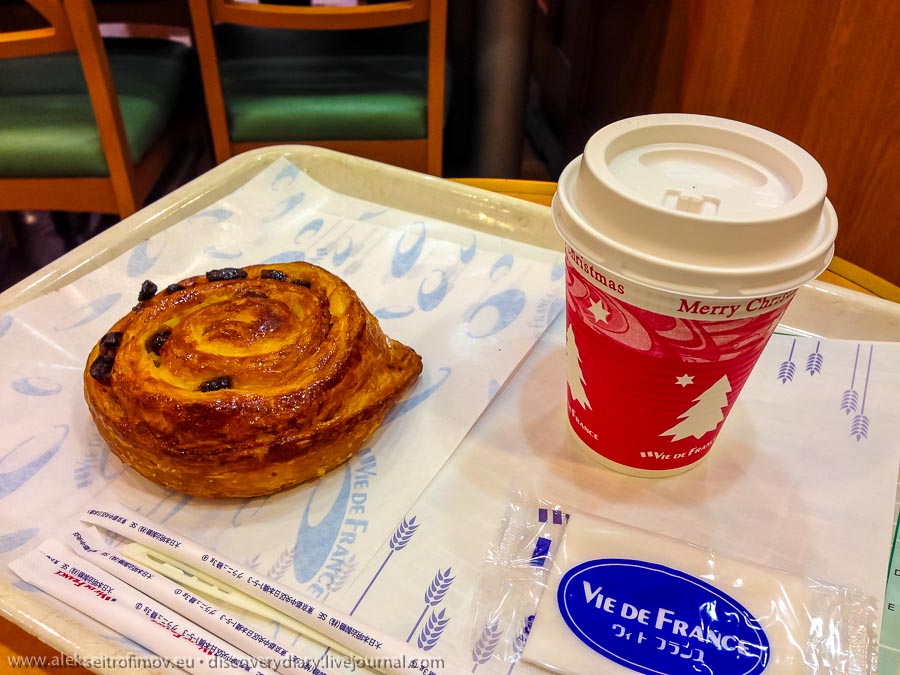Japan is a very strange country. During my trip around Japan I kept writing down in my red notebook the details of its weirdness. Here is a random list…
1. The white gloves, the epitome of elegance, that are worn by the drivers of buses and taxis. With their hands covered in these white gloves they swiftly operate the wheel and the luggage…
2. In many points of major Japanese cities very helpfully you can find the area plans, often featuring an English translation. But it took me several days to decipher the logic of the orientation of these maps. They are not oriented according to any cardinal direction! It turns out that the up-down axis of the map corresponds to the very direction in which you are looking when you face this map. You have to marvel at the utter precision which was necessary to manufacture these maps so that they correspond so precisely to their rather random-looking position in some metro tunnel or on a street corner. Anyhow, this positioning of the map threw me off every time – my European brain is too used to put every map into the North-South axis.
3. An entirely different logic of house numbers. We are used to a street with numbers growing along the two sides, usually odd numbers on one side and even on the other. The Japanese city is divided first into areas with names (sort of like our street names). Then this area is further subdivided into numbered sub-areas, usually delimited by actual physical streets or pathways. However there is no particular reason why such and such sub-areas bears a particular number. Inside the sub-area the houses are further numbered, usually in the order as you would encounter them if you were to go around the sub-area, but not necessarily. For example, the address of the ryokan where I stayed in Tokyo was as follows:1-30-12 Asakusa, Taito-ku, Asakusa, Tokyo, Japan 111-0032. This is to say that it was house nr 12 in sub-area nr 30 in the first Asakusa area. This is how it looks on the map: address.
4. Coming from the United States, several times I critically misunderstood the Japanese traffic lights and entered the road while the cars were moving. In Japan the red lights is shown by two parallel vertical bars. As the green light approaches, the bars decrease in size – this way you can always estimate how long you still have to wait. However in America the red parallel bars blinking mean that the red light is just starting and in principle pedestrians can finish the crossing.
5. A fascinating way of indicating time. Instead of saying, that say an onsen is open until 2 am, the Japanese will write: open until 26:00. 25:00 would correspond to 1 am and 28:00 to 4 am etc. I find this very logical indeed.
6. The direction of reading books – similarly to Arabic and Hebrew books, the Japanese books are read from left to right. This means that the first page is where you would expect the last. Even opening a Japanese magazine, you have to adjust.
7. Since we talk directions, of course the Japanese could be like everybody else. They just had to drive on the left.
8. In Japan you are not supposed to tip. This culture eliminates all uncertainty. A paradise for introverts.
9. Indeed it is a paradise for introverts in a number of ways. I was speechless when I first saw a Japanese bus – where you do not have to have a neighbour at all as all seats are separated by a passage!
10. You cannot go around the Japanese food. I will write about it separately. Here I will just mention the strangest dish ever. This title must go to nattō beans – slimy beans fermented in a special bacteria. They say that this is the dish that they use to test if a foreigner (gaijin) has really adapted to life in Japan. Because the beans look really disgusting. I tried them. They taste pretty funky. Not to belabour the point, this is by far the weirdest food I’ve ever eaten.
11. The Japanese sweets are also pretty weird. Often they are not sweet at all. Most sweets are indeed made from bean pasta!
12. After a while you realise that most Japanese dishes are borrowed either from their neighbours the Chinese or directly from the Europeans. But the longer the isolated Japanese had to alter these dishes, the less recognisable they become. Take Japanese pizza – nothing like the original.
13. Japan is choke full of coffee shops. These often look very sophisticated, even glamorous. But what I found most surprising about them was the fact that in each café inevitably there was a partition for smokers, and indeed it was full of smoking people – often there were more smokers than non-smokers.
14. The Japanese are quite obsessed by all things French. For them French is the ultimate synonym of elegance and refinement. And to be frank, the fantasy objects made à la française in Japan are already so excessively elegant, that oftentimes in my opinion they exceed and surpass the supposed original. Thus I am not surprised by the stories about how the Japanese are shocked when they visit Paris, seeing how it is nothing like they imagined, but in fact rather dirty and brash. I profited fully from this Japanese obsession and visited regularly a coffee shop network called Vie de France, where you could have wonderful pain au raisin and of course proper latte – and thus to escape the crazy Japanese sweets for a bit.

Continue reading From the Japanese notebook: 28 impressions of Japan →